Group patrons are an upcoming feature from Tasha’s Cauldron of Everything. They’re a way for Dungeon Masters to unite the party, give them regular opportunities to go on quests without railroading them, and to give the characters achievable goals beyond just gaining gold and experience points. Beyond this, having an organization that your players’ characters are a part of can help ground them in the setting and encourage them to interact more deeply with the world—if they’re already inclined to do so.
So, how can you use group patrons in your campaign? How will they change the way your game is played? And how do they differ from the factions introduced in the Dungeon Master’s Guide?
Group Patrons in Eberron
Group patrons were first introduced Eberron: Rising from the Last War. In this book, they were presented as an optional part of character creation. While no one knows exact what group patron options will appear in Tasha’s Cauldron of Everything, a number of group patrons first appeared in Eberron, and will likely appear in Tasha’s. These group patrons include:
- Crime Syndicate
- Dragonmarked House
- Espionage Agency
- Head of State
- Immortal Being
- Inquisitive Agency
- Military Force
- Newspaper
- Religious Order
- University
It’s likely that not all these organizations will recur in Tasha’s, because of how idiosyncratic they are to the noirish, pulpy, post-war setting of Eberron. Dragonmarked House and Newspaper are likely to go, but that’s probably fine. After all, the dragonmarked houses are specific to Eberron, and how many major newspaper publishing houses will you find in your average D&D campaign setting?
Of course, while cities like Sharn, City of Spires, are a defining element of the political landscape in Eberron, that’s not to say that there aren’t other cities in other major D&D campaign settings! An adventure set largely in Waterdeep may well give you an opportunity to join the Watchful Order of Magists and Protectors. An adventure beginning in Baldur’s Gate may see characters ally with the Flaming Fist mercenary company as their powerful and influential patron. Any place where power congregates is a good place for adventurers to find a patron who wishes to spread their influence.
Each major group patron option provided in Eberron: Rising from the Last War includes a number of important details that makes it easy to incorporate them into your campaign. What sort of assignments might they give your characters? What benefits and favors could they earn for being a part of this organization? How can you set up your own organization and become your own patron? (This is an awful lot like freelancing; you’re your own boss, but you also have to deal with all the stress of keeping your own organization afloat while doing all the work yourself.)
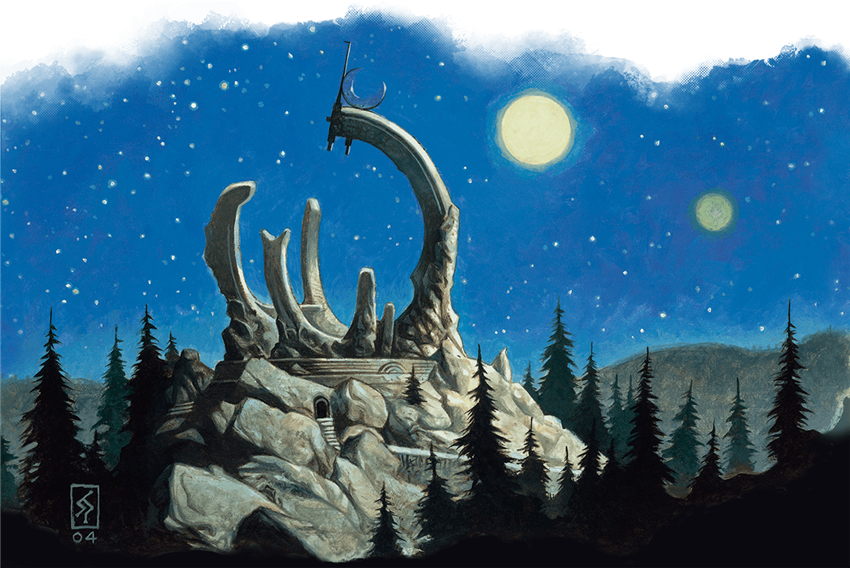
Establishing a Group Patron
The best time to bring up a group patron is during your Session Zero (another topic discussed in Tasha’s Cauldron of Everything). This discussion is related to the concept of how your party met one another. Some D&D campaigns begin with the adventurers being long-time partners. Others, with them meeting in a tavern for their very first quest. There are dozens of options, and a unifying patron is a great way to cut straight to the chase and get the party on one quest that they all can (or, sometimes, must) agree upon.
Your Dungeon Master may want to have the party meet for the first at the beginning of the campaign—which makes the party-gathering aspect of group patrons redundant. That’s okay, if you, your party members, or your DM are interested in having an organization as a patron for your adventuring party, there are other ways of making that happen. The discussion over how every player in the D&D group can get what they want out of the game is a big part of Session Zero. Even if you don’t use a group patron as a way to gather the party at the beginning, it could be a bigger part of your campaign later on. You may join an organization deeper in the campaign—or have to choose between several competing factions—and begin working through the ranks as your adventuring career progresses.

Creating Quests with a Group Patron
One of the premiere ways to use a group patron is to make them a giver of both quests and rewards to the player characters. While it can be appealing for new Dungeon Masters to drive an entire campaign with patron-approved quest chains, be careful of railroading your players. In other words, try to avoid making it impossible to turn down your patron’s missions. The characters may want to pursue their own goals, whether those goals are related to their characters’ backstories, their own in-world desires for wealth, fame, or exploration, or to the overarching plot of the campaign.
Giving the players the opportunity to pursue their own investigations are a great part of any D&D campaign. Using a patron to offer optional quests to the characters can help any DM in the balancing act of giving the characters enough leeway to follow their instincts and giving the players so much latitude that they don’t know where to start. If the characters don’t know what to do, they can follow the patron-offered quest. If they have their own plans, they can either turn down the quest, or find a way to accomplish it while they’re pursuing their own self-directed objectives.

A great way to deliver quests to the player characters is to have their patron literally deliver a letter to them with missions they could choose from, perhaps with a bit of commentary. The characters might receive a letter tied to the talon of a hawk one day, and upon unfurling the parchment read:
Dear esteemed adventurers,
Your friends within the Harpers must call upon your services as discord spreads across the Western Heartlands. Find enclosed a number of assignments that you may accept at your leisure. We have a number of covert agents in the area, so fear not if you are unable to dedicate your attention to any of these minor crises.
- Abjur the troll-king has begun spreading out of the Trollclaws, and is moving towards Dragonspear Castle. His troll-horde is strong, and is too powerful to turn away with force. A clever Harper could sow dissent among the ranks of the trolls. Reward: 1,500 gp
- Remnants of a cult of elemental evil has emerged from the Dessarin Valley and is gathering in Amphail, several miles north of Waterdeep. If their motives were discovered, we could strengthen Waterdeep’s defenses against their insidious lies. Reward: 1,000 gp
- A caravan of Lords’ Alliance soldiers traveling from Waterdeep to Neverwinter disappeared in the Mere of Dead Men. Though this is a Lords’ Alliance matter, we consider it our duty to understand the political maneuverings of the Sword Coast. What happened to the lost brigade? Reward: 2,000 gp
When any of these assignments are complete, please report back to your local Harper agent. The passphrase “I play sad songs on happy occasions” should alert any barkeep on the Sword Coast to your true intentions, and get you a contact.

The characters don’t have to commit to or complete any of these quests. However, completing them will earn them a monetary reward (and also a secret reward of renown, that useful social currency described in chapter 1 of the Dungeon Master’s Guide. Bringing renown and classic Forgotten Realms factions like the Harpers and the Lords’ Alliance into the discussion may make group patrons seem awfully similar to factions—also discussed in chapter 1 of the Dungeon Master’s Guide.
And in a way, that’s true! Group patrons and factions have a great deal of overlap. The main difference is that factions are almost always political and have a major effect on the world at large. Group patrons run the gamut from heads of state to local newspaper organizations. Some patrons are vast organizations, some are ancient immortal beings who operate in secrecy, with no other operatives. Generally, however, group patrons are mid-sized organizations at largest, since they take a specialized interest in the characters' activities; they aren't just a cog in a machine, but a potentially respected part of a greater cause. If your group’s patron is a large, faction-like organization with dozens, if not hundreds (even thousands?), of members, then you may wish to use the renown rules to show how the characters ascend through the ranks.
Guidelines for rewarding renown are found in chapter 1 of the Dungeon Master’s Guide, but it’s easy enough to bend those rules to speed up how quickly the party becomes renowned, if you wish. If your patron is well-known within a community, such as the Korranberg Chronicle newspaper in Eberron or the Lords’ Alliance in Faerûn, characters may start to gain fame among the general public as they gain more and more renown within their organization. As anyone with a large social media following knows, fame can be a blessing and a curse. Characters with a large amount of renown may receive fan mail or secret messages from people wishing to help them on their adventures—but they may also receive ominous threats, frustrating misinformation, or obsessive fans who won’t leave them alone. Dealing with the fallout of fame could be a minor quest all on its own!
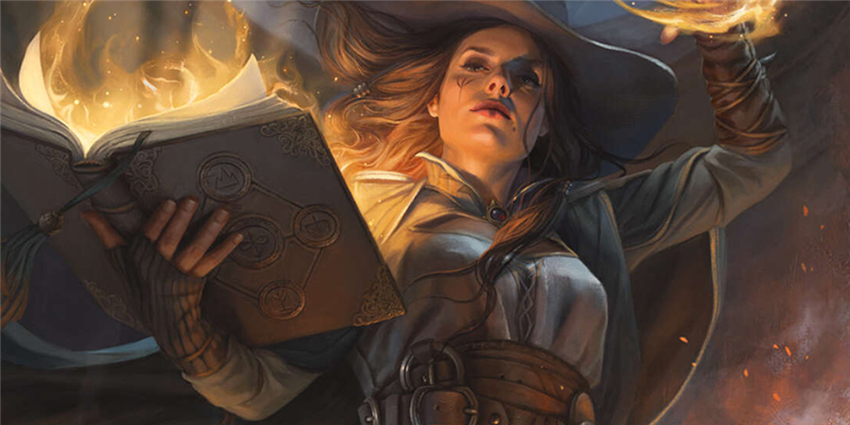
Are you planning on using group patrons in your campaign? You can use them right now by getting Eberron: Rising from the Last War on the D&D Beyond Marketplace. Or, if you aren’t in a rush, you can also find the rules and suggestions for how to use group patrons to enhance your campaign by pre-ordering Tasha’s Cauldron of Everything and earning unique pre-order bonuses!
Create A Brand-New Adventurer Acquire New Powers and Adventures Browse All Your D&D Content
 James Haeck is the lead writer for D&D Beyond, the co-author of Waterdeep: Dragon Heist, Baldur's Gate: Descent into Avernus, and the Critical Role Explorer's Guide to Wildemount, a member of the Guild Adepts, and a freelance writer for Wizards of the Coast, the D&D Adventurers League, and other RPG companies. He lives in Seattle, Washington with his fiancée Hannah and their animal companions Mei and Marzipan. You can find him wasting time on Twitter at @jamesjhaeck.
James Haeck is the lead writer for D&D Beyond, the co-author of Waterdeep: Dragon Heist, Baldur's Gate: Descent into Avernus, and the Critical Role Explorer's Guide to Wildemount, a member of the Guild Adepts, and a freelance writer for Wizards of the Coast, the D&D Adventurers League, and other RPG companies. He lives in Seattle, Washington with his fiancée Hannah and their animal companions Mei and Marzipan. You can find him wasting time on Twitter at @jamesjhaeck.








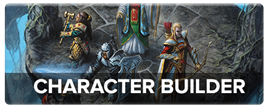
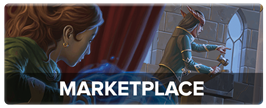
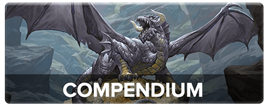
-
View User Profile
-
Send Message
Posted Nov 6, 2020Great Article!
-
View User Profile
-
Send Message
Posted Nov 6, 2020cool I will try to intro them in to my campaigns
-
View User Profile
-
Send Message
Posted Nov 6, 20203rd
great article! i have misunderstaned what a group patron was until i read this
-
View User Profile
-
Send Message
Posted Nov 6, 2020Great article, but why are you posting this before Tasha's Cauldron of That One Potion That Was Labeled "Healing" But Accidentally Made Tasha Breathe Fire In Xanathar's Face is released?
-
View User Profile
-
Send Message
Posted Nov 6, 2020I'm pretty sure the patrons in Tasha's are
And of course...
-
View User Profile
-
Send Message
Posted Nov 7, 2020You may join an organization deeper in the campaign—or half to choose between several competing factions—and begin working through the ranks as your adventuring career progresses. Got a typo there with the "half to choose".
-
View User Profile
-
Send Message
Posted Nov 7, 2020Wow, that was exactly my guess too.
The strange thing is that in discussing Tasha's, they've actually mentioned the interview with Jeremy Crawford over on IGN. They know that the contents page has been released and for some reason we are acting like it hasn't? Whatever, huh?
-
View User Profile
-
Send Message
Posted Nov 7, 2020I'm actually planning of presenting a selection of patrons that the group has been noticed by once the first arc is complete. The group doesn't have much in common, so I'm considering that with the ones I present to them, or they could choose none!
-
View User Profile
-
Send Message
Posted Nov 7, 2020I introduced a guild for my players that's upgradeable—It starts as a young guild out of an old warehouse with a potions master, a quest agent, and a quartermaster. The more the players donate to the guild, the more features it gets, and they can donate magic items for use of the guild members, hire hirelings, and eventually do quests to find better locales (destroy the undead in a haunted house in town, clean the arcane traps out of an abandoned archmage's tower, etc.) for the headquarters. Besides being a great source of quests, I want my players to actually get invested in the establishment itself and help it help them over time.
-
View User Profile
-
Send Message
Posted Nov 7, 2020"idiosyncratic they are to the nourish" Apparently Eberron was underfed, so all these organizations were initially formed as soup kitchens. Hijinks ensued, Dragonmarked Houses, Religious Orders, Criminal Syndicates arose, and the rest, as they say, is fictional history.
-
View User Profile
-
Send Message
Posted Nov 7, 2020It’s like Acquisitions Inc without the satire. If you like patrons, check out Acq Inc.
-
View User Profile
-
Send Message
Posted Nov 7, 2020I immediately want to run Strahd as a group patron.
-
View User Profile
-
Send Message
Posted Nov 7, 2020Uh... anyone else notice anything strange about this post?
-
View User Profile
-
Send Message
Posted Nov 7, 2020I assume it's either a bot / friend post, or they just read the Warlock 101 article that was posted this week & got switched up.
-
View User Profile
-
Send Message
Posted Nov 7, 2020I’m actually working on a shared campaign document for an upcoming deployment and plan to use Vajra Safahr as the patron. It’s mostly Westmarch-styled gameplay with renown as progression.
-
View User Profile
-
Send Message
Posted Nov 7, 2020What I wonder: James Haeck is the (co-)author of "Waterdeep: Dragon Heist".
And the story is in the first two chapters: You meet in a bar. You do something that makes you famous. You get a place you can fit as you like, for example: A Newspaper. Fractions get interesting in you and their agents want to become your group patron.
Why not mention that? You can put that pattern so easy at the begin of any campaign!
-
View User Profile
-
Send Message
Posted Nov 8, 2020what the terrasque is this.... thing!!!???!!!
-
View User Profile
-
Send Message
Posted Nov 8, 2020the classic "Adventurer Guild" to give out requests (plot hooks) for quick money.
-
View User Profile
-
Send Message
Posted Nov 8, 2020I have a group that plays in the Eberron setting, I'm thinking of using Morgrave University (found in Sharn) as a group patron for an expedition-style campaign, essentially the party is sent out by the University to map out new islands and protect their researchers from pirates and monsters.
-
View User Profile
-
Send Message
Posted Nov 9, 2020I watched the video and read the article, and I thought this was a very helpful reminder for GMs who are running a homebrew campaign that they need to populate their cities and worlds with organizations of people who share common goals.
Too often, I forget that communities aren't just the residents and the businesses. They are also made up of the complex and delicate tangle of powers and alliances that guilds and organizations bring.
For anyone who's running a campaign that's heavy on political intrigue or one that is focused on a city, deep thinking about professional guilds and organizations (patrons, benefactors, employers, etc.) is a must.